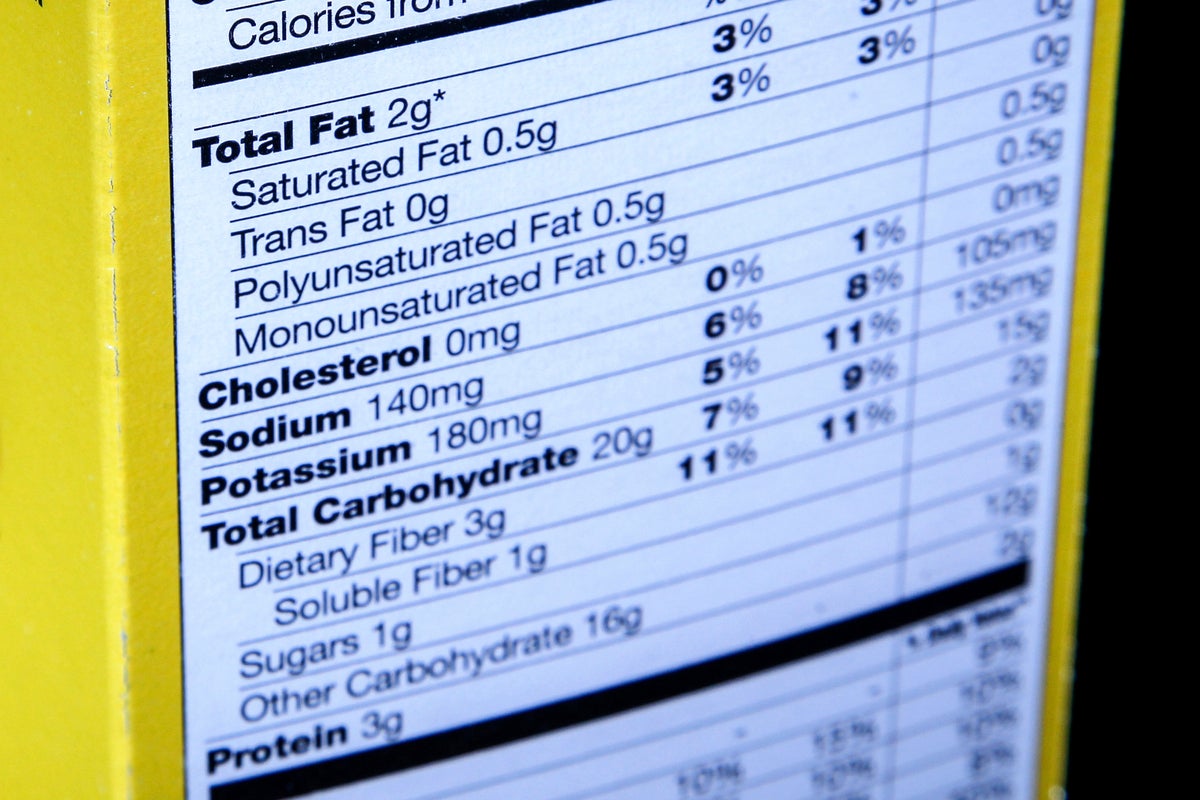
The Biden administration has suggested moving nutrition labels to the front of food products as part of a series of policies aimed at tackling the nation’s hunger and diet-related diseases by the year 2030.
On Wednesday, the White House will be hosting a Conference on Hunger, Nutrition and Health, the first of its kind in 50 years. Ahead of the meeting, the administration outlined some of the policies it intends to introduce at the conference in a 44-page summary, which included migrating the iconic black and white nutrition label to the front of food packages.
The changes to the way that food in America is packaged and sold is just one of the policies that the Biden administration hopes to implement in the coming years in an effort to address the “urgent” hunger and diet-related diseases that impact millions of Americans that have only intensified as a result of the Covid-19 pandemic.
“Hunger, diet-related disease, and the disparities surrounding them impact millions of Americans, and the COVID-19 pandemic put a spotlight on the urgency of addressing these issues,” said Ambassador Susan E Rice, domestic policy adviser, in a statement when the conference was announced back in the springtime. “No one should have to wonder where their next meal will come from. We must take bold steps now—with government, the private sector, non-profits, and communities working together—to build a healthier future for every American.”
The Biden administration has said it wants to tap the Food and Drug Administration to carry out research about this specific policy initiative to see whether the placement of labels could better “communicate nutrition information” to prospective customers.
NPR reported that another proposed change to the nutrition labelling system, which has been appearing on grocery store shelf products since 1994, would be the addition of “star ratings or traffic light schemes to promote equitable access to nutrition information and healthier choices”, which they hope would have the knock-on effect of nudging the food industry to sell healthier food.
As part of the White House’s broader strategy to make healthful food more readily available, officials have also suggested expanding free school meals to 9m more children over the next 10 years and making it easier for children to continue to use those school-based programs during the summer and holidays.
The conference, which was announced in May, is the second time an event of this kind has been held since the inaugural one in 1969. It arrives at a pivotal time for the US in addressing the fight against hunger and diet-related diseases, both of which were exacerbated by the Covid-19 pandemic according to the Centers for Disease Control and Prevention and the US Department of Agriculture.
For instance, a study of 432,302 children between the ages of 2 to 19 years old found the rate of body mass index (BMI) increase nearly doubled during the pandemic when compared to a pre-pandemic period, the CDC found.
And though before the onset of the pandemic, the overall food insecurity rate had dipped to its lowest point since it began being measured in the 1990s, that progress was largely upended after March 2020.
Feeding America, a US nonprofit organisation with a nationwide network of more than 200 food banks, reported that an estimated 45m people (1 in 7), which includes 15m children (1 in 5), may have experienced food insecurity in 2020 and for the next year they predicted that would only dip down to 42m total.
And though the lockdown restrictions that shuttered most of the economy and sent unemployment skyrocketing during the first part of pandemic may now be waning, inflation remains at a record level with grocery bills climbing for nearly every month this year, The Washington Post reported.
Compared to last summer, groceries prices are 12.2 per cent higher, which is the largest year-over-year spike in more than four decades. And the food products that are reflecting that increase are the ones that the Biden administration is hoping to get into families’ cupboards (fruits and vegetables, for instance cost 8 per cent more while commonly purchased products like bread and cereal are up 14 per cent, according to federal data).
Also slated to be introduced at Wednesday’s conference is: the improvement of public transportation to supermarkets and grocery stores for the nearly 40m Americans who live in food deserts; eliminating and/or reducing food waste; increasing the amount of green space in “nature-deprived communities”; piloting programs that would cover medically tailored meals for people who are on Medicare; updating the guidelines for food products that include the word “healthy” on the label; and educating health-care providers on nutrition.
Since a good portion of the proposals that will be outlined in the conference would require legislation to be approved by Congress, it’s unclear how long these proposals would be able to be implemented in the near future, if at all.
Though the 1969 conference saw many of the suggested proposals taken up within two years, advocates warn that it could take several to even see a few of these policies play out in real world conditions, NPR reported.
Despite the seeming uphill battle, President Joe Biden maintained that he was “committed” to enacting real change when he unveiled the conference back in the spring.
“I’m committed to taking bold steps that are going to help end hunger and enable everyone to have access to affordable, healthy food and safe places to be physically active,” said the president in a prepared address. “Together let’s build a healthier future for all Americans.”







